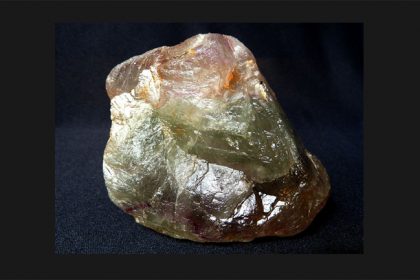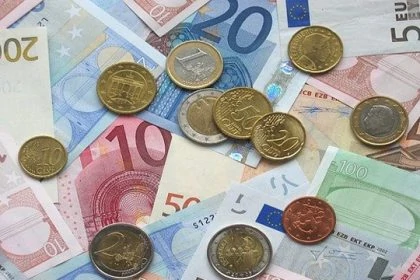The ECJ today ruled on the technical effect of the mark in the case of ‘shape of goods with technical effect’ in a 3D Union trade mark application filed as a decorative object. The perception of the public is relevant for the determination of the characteristics, but not for the ground for refusal, the ECJ ruled.
 In the case decided today before the ECJ, the outgoing case concerned a three-dimensional body, looking like a decorative stone with smooth and curved surfaces, which had been applied for in 2015 by the applicant Gömböc Kft (Hungary) as a 3D Union trademark for the goods decorative and toys.
In the case decided today before the ECJ, the outgoing case concerned a three-dimensional body, looking like a decorative stone with smooth and curved surfaces, which had been applied for in 2015 by the applicant Gömböc Kft (Hungary) as a 3D Union trademark for the goods decorative and toys.
Background
The trademark application requested was refused on the ground that the three-dimensional body always returns to its position of equilibrium; the entire shape of the good serves the technical objective of the body being able to stand upright again from any position. In addition, the three-dimensional shape represented embodies an attractive and striking design and constitutes a central element for the marketing of the goods concerned.
That function of the shape of the good was made known to consumers through the trade mark applicant’s website and through extensive press publications.
Gömböc Kft. applied for a review of the decision. In particular, it was questionable whether such an examination should be based solely on the graphic representation in the application for registration of the sign, since the contested shape of the product with a technical function could not be determined solely on the basis of the graphic representation of the shape of the product in the application for registration, but required knowledge of additional information about the product itself.
The Hungarian court therefore asked the European Court of Justice (ECJ) to interpret Article 3(1)(e)(ii) and (iii) of Directive 2008/95/EC and to examine whether a sign consists exclusively of the shape of goods which is necessary to obtain a technical result. The question was whether, for the purposes of that examination, account should be taken only of the graphic representation of that sign or also of other information such as the perception of the relevant public.
For the parties to the main proceedings, these proceedings are a step in the proceedings pending before the referring Hungarian court, Kúria.
Essential characteristics with technical effect: ground for refusal
According to general case-law, a sign must be refused registration as a trade mark if the ‘essential characteristics’ of its shape perform a technical function. The ECJ explained that the decisive authority must therefore properly identify the ‘essential characteristics‘ of the sign and also determine whether these characteristics correspond to a technical function of the product. In doing so, the competent authority can either rely directly on the overall impression created or first examine all the components of the sign one by one, the court explained. The determination of the technical functions of the product in question by the competent authority must be based on objective and reliable information. This included, first, previously granted property rights – in the present case the sign was a protected design – as well as analogue and digital publications describing their technical functions.
The ECJ stated that, although the identification of the essential characteristics of such a sign must in principle begin with an examination of the graphic representation of the sign, it was not possible to determine the essential characteristics of the sign in question. However, the competent authority could also refer to other useful information which would enable those characteristics to be determined correctly.
Perception of the public: relevant for the characteristics, not for the ground for refusal
In this context, the presumed perception of the sign by the relevant public may be a useful criterion for assessment, but it is not a relevant factor in the application of the ground for refusal in Article 3(1)(e)(ii) of Directive 2008/95, the ECJ held. However, that ground for refusal is applicable where it is clear from objective and reliable evidence that a characteristic which has been identified determines to a very large extent the decision of consumers to purchase the product concerned.
Moreover, the ECJ added that this ground for refusal must be applied even if the graphic representation of the shape of the product enables only part of its form to be perceived, provided that the visible part of the shape is necessary to obtain the technical result of the product, even if it is not in itself sufficient to obtain that result. Thus, the ECJ held that this ground for refusal applies to a sign consisting of the shape of the product concerned which does not display all the essential characteristics necessary to obtain the intended technical result, provided that the graphic representation of the shape of the product shows at least one of the essential characteristics necessary to obtain that technical result.
Existing design protection and decorative object
In a further aspect, it was also necessary for the court to clarify whether this ground for refusal – signs consisting exclusively of the shape of goods – should be applied systematically even where the appearance of those goods is protected by design or where the sign consists exclusively of the shape of a decorative object. The Court answered that question in the negative, answering the aspects relating to design protection and decorative objects separately as follows.
Protected design may be refused as trademark
In principle, it is possible for several protective rights to coexist, as confirmed by the ECJ, while at the same time pointing out that the rules of Union law on the registration of designs and the rules applicable to the registration of trade marks are independent of each other, so there is no hierarchy between them. And: a design can be refused registration as a trade mark on the basis of a ground for refusal in trade mark law.
A design is protected by a design right if it is new and has individual character, in accordance with Article 3(2) of Directive 98/71, but that is quite different from examining an application for a trade mark to determine whether a sign within the meaning of Article 3(1)(e)(iii) of Directive 2008/95 consists exclusively of the shape which gives substantial value to the product.
Decorative object – essential value of the goods?
In the present case, the Hungarian Office had found that the shape embodies an attractive and striking design. And indeed, the wording ‘shape which gives substantial value to the goods’ in Article 3(1)(e)(iii) of Directive 2008/95 is aimed in particular at signs having artistic or decorative value, the ECJ explained today.
However, this is not achieved by filing an application for registration of signs consisting of the shape of goods, as in the present case, for example, under “Decorative objects” or “Decorative glass and ceramic objects” in Nice, classes 14 and 21. Rather, the competent office must examine whether, in the specific case, the conditions for applying the ground for refusal in Article 3(1)(e)(iii) of Directive 2008/95 are met. Accordingly, the Office must clarify whether the sign applied for consists exclusively of the shape which gives substantial value to the goods, the ECJ decided.
More clarity with regard to the examination of the technical function of a trademark
Today’s judgment once again clarifies the interpretation of Article 3(1)(e)(ii) and (iii) of Directive 2008/95/EC and, in particular, in relation to the examination of the technical effect of a trademark consisting of the shape of goods.
Recently, two other important judgments were delivered before the European Court of First Instance (CFI) on 3D trade marks having a technical effect. In a case involving concentric circles, the CFI ruled that acquired distinctiveness of a trade mark through use cannot counterbalance a technical result obtained from the shape of the product. And the fact that there are alternative shapes with which the same technical result can be achieved does not prevent the exclusion of a trade mark on the basis of a technical result from the shape of the product, the CFI ruled in the case Tecnodidattica.
Do you also want to protect or defend your trademark?
Our attorneys have many years of experience and expertise and will be happy to advise you. Please contact us if you are interested – we look forward to your call!
Sources:
Judgement of ECJ ‘shape of goods with technical function’, EU:C:2020:296
Image:








Leave a Reply